8 species.
5 individuals each.
40 total trees/shrubs.
-
What is phenology?
Phenology is the timing of biological life events. In animals phenology may include migration, hibernation or molting. In plants, phenology includes events such as the time of flower and fruit development and leaf changes. The phenology of plants and animals may be affected by changes in climate such as temperature and precipitation. -
About the trail
The National Phenology Network and CEREUS, a consortium of colleges and universities in Southern Appalachia, are studying plant responses to global change through implementing phenology trails where citizens, students, and scientists can study selected trees and shrubs in specific locations over time. The ETSU Phenology Trail was implemented for the long-term study of tree and shrub phenology in University Woods. This trail will serve as an outdoor lab for ETSU students to learn about, to study, and to collect data on phenology of local plants.
The Species:
Red maple (Acer rubrum)
Yellow buckeye (Aesculus flava)
Mockernut hickory (Carya tomentosa)
Eastern redbud (Cerscis canadensis)
American beech (Fagus grandifolia)
White ash (Fraxinus americana)
Spice bush (Lindera benzoin)
Tulip poplar (Liriodendron tulipifera)
Red maple (Acer rubrum) has a widespread distribution throughout the Eastern United States.
Red maple is found growing amongst other hardwoods including: black cherry, sugar
maple, beech, and birch trees. In the spring, this species is one of the earliest
trees to flower and is known for its vivid red foliage in autumn.
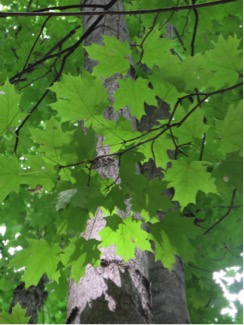 Photo by Kevin Brooks
Photo by Kevin Brooks
Yellow buckeye (Aesculus flava) is native to the Eastern United States and is found in rich, mesic soil near streambeds and on moist slopes with ample sunlight. Yellow buckeye is resistant to most disease and pests that plague other species in the Hippocastanaceae, or Horsechesnut family. The fruit of yellow buckeye produces two nuts per capsule, which is distinguished from the Ohio Buckeye that have one nut per capsule.
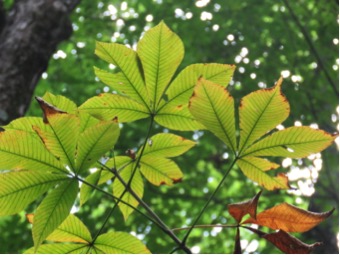 Photo by Kevin Brooks
Photo by Kevin Brooks
Mockernut hickory (Carya tomentosa) is found throughout the beech-maple forest. Mockernut hickory thrives in moist, well-drained, and acidic soils. This species is drought tolerant. Mockernut hickory is used in industry for lumber, wood chips, and fuel wood. Humans and wildlife utilize hickory nuts as a food source.
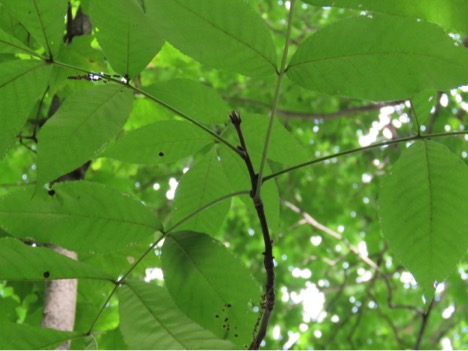
Photo by Kevin Brooks
Eastern redbud (Cercis canadensis) is in the Fabaceae, or legume, family. Eastern redbud is commonly planted as an ornamental, and is found in a variety of forest communities. It thrives in well-drained soils and can withstand a variety of soil types, such as nutrient deficient soils.
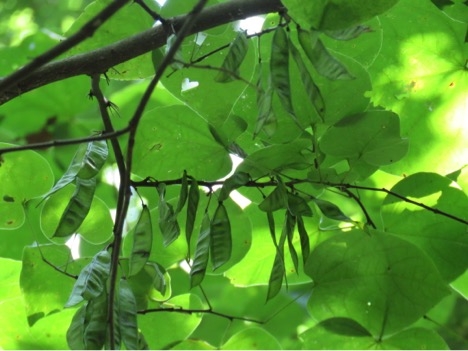
Photo by Kevin Brooks
American beech (Fagus grandifolia) is found in mesic areas of the eastern deciduous forest. This species requires a lot of water and ample sunlight for optimal growth. Throughout the Southern Appalachians, American beech is often found on western slopes and at high elevations. Beech nuts are eatable and provide food for both humans and wildlife.
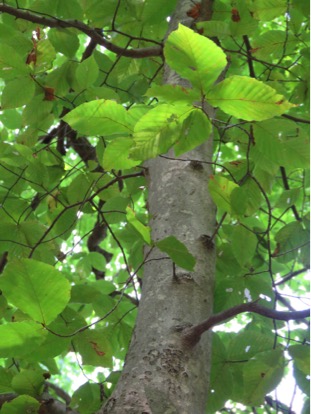
Photo by Kevin Brooks
White ash (Fraxinus americana) is a hardwood, which is used to make baseball bats and tools. It grows in hardwood forests among: yellow poplar, black cherry, American beech, red maple, white oak and red oak. The species is dioecious; there are separate male and female trees.
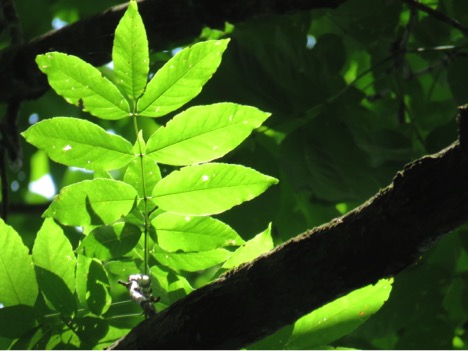 Photo by Kevin Brooks
Photo by Kevin Brooks
Spice bush (Lindera benzoin) is an understory shrub that does not reach more that 5 meters tall. Spice bush is found throughout low woods and in moist areas, near stream-sides or swamp margins. As the common name suggests, the foliage has a distinctive spicy smell. The fruits, leaves, and stems may be used for culinary flavor or tea. The species is dioecious.
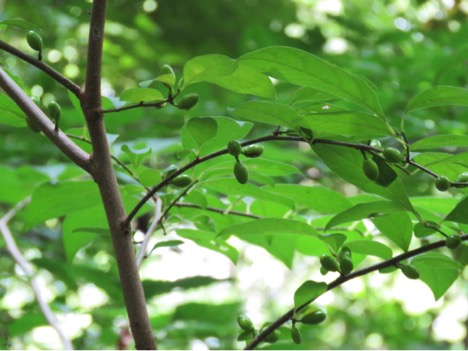
Photo by Kevin Brooks
Tulip poplar (Liriodendron tulipifera) is in the Magnoliacaea family. Along with white pine, it is one of the tallest trees in eastern deciduous forests, and is known for its rapid growth. This species is used in industry for wood, is planted as an ornamental, and provides food for many animals.

Photo by Kevin Brooks
Links
USDA Plant Database
Encyclopedia of Life
Nature's Notebook



 Stout Drive - Partial Closure...
Stout Drive - Partial Closure...